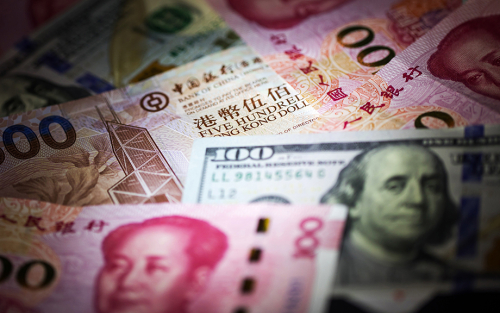Modeling the Global Effects of the COVID‑19 Sudden Stop in Capital Flows

The COVID-19 outbreak has triggered unusually fast outflows of dollar funding from emerging market economies (EMEs). These outflows are known as “sudden stop” episodes, and they are typically followed by economic contractions. In this post, we assess the macroeconomic effects of the COVID-induced sudden stop of capital flows to EMEs, using our open-economy DSGE model. Unlike existing frameworks, such as the Federal Reserve Board’s SIGMA model, our model features both domestic and international financial constraints, making it well-suited to capture the effects of an outflow of dollar funding. The model predicts output losses in EMEs due in part to the adverse effect of local currency depreciation on private-sector balance sheets with dollar debts. The financial stresses in EMEs, in turn, spill back to the U.S. economy, through both trade and financial channels. The model-predicted output losses are persistent (consistent with previous sudden stop episodes), with financial effects being a significant drag on the recovery. We stress that we are only tracing out the effects of one particular channel (the stop of capital flows and its associated effect on funding costs) and not the totality of COVID-related effects.
Good News, Leverage, and Sudden Stops

One of the major debates in open economy macroeconomics is the extent to which capital inflows are beneficial for growth. In principle, these flows allow countries to increase their consumption and investment spending beyond their income by enabling them to tap into foreign saving. Periods of such borrowing, however, are associated with large trade deficits, external debt accumulation, and, in some cases, overheating when these economies operate beyond their potential output level for an extended period of time. The relevant question in this context is whether the rate at which a country is taking on external debt has useful predictive information about financial crises.
Financial Crises and the Desirability of Macroprudential Policy

The global financial crisis has put financial stability risks—and the potential role of macroprudential policies in addressing them—at the forefront of policy debates. The challenge for macroeconomists is to develop new models that are consistent with the data while being able to capture the highly nonlinear nature of crisis episodes. In this post, we evaluate the impact of a macroprudential policy that has the government tilt incentives for banks to encourage them to build up their equity positions. The government has a role since individual banks do not internalize the systemic benefit of having more bank equity. Our model allows for an evaluation of the tradeoff between the size of such incentives and the probability of a future financial crisis










 RSS Feed
RSS Feed Follow Liberty Street Economics
Follow Liberty Street Economics